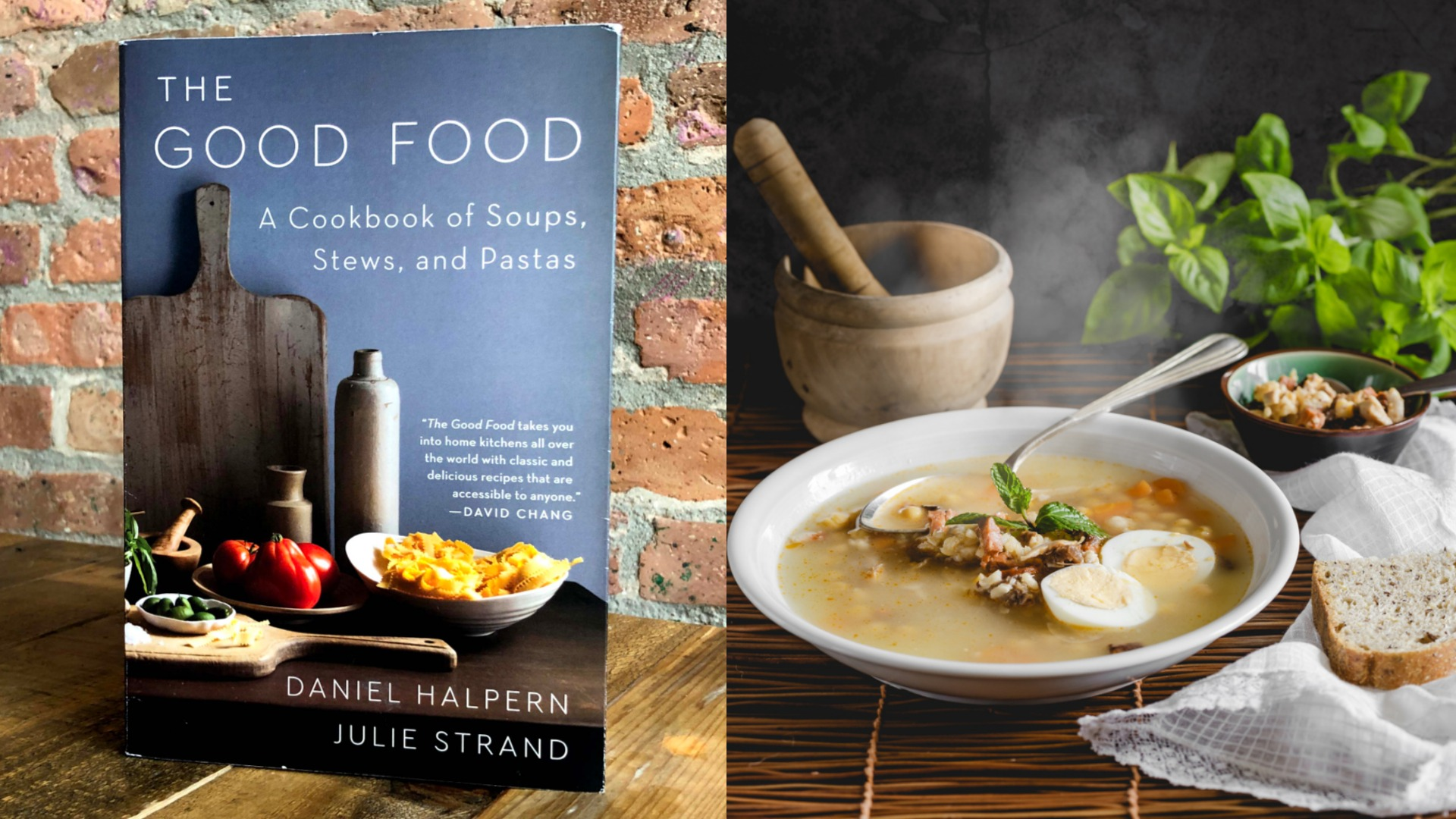The Good Food is The First Cookbook Aspiring Cooks Should Seek Out
We may receive a commission on purchases made from links.
I've become such a junkie for beautiful food photography that I sighed when I saw The Good Food on my kitchen counter. It looks like a paperback novel—colorless, photo-less, with deckled edges. How could I be inspired if I wasn't shown what the food should look like, and more importantly, the lifestyle that accompanied that food? Jamie Oliver in his garden slicing beets with a trowel. Gwyneth Paltrow being thin in her kitchen. The Barefoot Contessa chumming with her rich friends in the Hamptons. My weakness for cookbooks prevailed and I flipped through a few pages.
Its subtitle drew me in: A Cook book of Soups, Stews and Pasta. Isn't that basically what everyone wants to eat for dinner? Or have their friends make for them? This was a book of deep, time-consuming, but worthwhile recipes—nearly 200 in total. Amazingly this photo-less book helped me envision my own more realistic food lifestyle: It contains the kind of dishes I envision myself eating sitting around a table with friends, served with the ubiquitous lemony green salad, bread, and bottle of wine.
No swaps, no substitutions, just "this is how you make it, and this is what goes in it" type of directness missing from modern cookbooks. No comedic stylings, nothing overly conversational, just an immensely practical book with a who's who of praise on its back cover: David Chang, Paula Wolfert, April Bloomfield, Michael Chabon. This book reminded me that even though I consider myself an accomplished cook at this stage of my life, everyone still needs a mentor in the kitchen. (Or two in this case: Daniel Halpern and Julie Strand. The Good Food was first published in 1985 and rereleased this month from HarperCollins.)
What's appealing about The Good Food (besides a cookbook filled with dishes I want to make tonight as a winter storm barrels towards my hometown Chicago) is that the recipes sound antiquated and rudimentary—cream of lettuce soup, minestrone, linguine with gorgonzola sauce—but are, in fact, recipes that aren't merely aspirational, but functional. Pick any weeknight: Nine dinners out of 10, the meals I cook are recipes coming from a book like this.
The book is a trove of circa-'80s lifehacks, such as thickening cream soups with three egg yolks—although some are indefensible, such as the ghastly suggestion of substituting Canadian bacon in a spaghetti carbonara. Nevertheless, there's a charming directness to The Good Food, reading less like hubris and more a "don't make the same mistake we did" tone. ("It's imperative that you use the thinnest pasta available for this dish," is the lone, pithy preamble to the cold tagliatelle with poached salmon in creamy vinaigrette recipe.)
The dishes in this book are not meant to be Instagrammable. They are mounds and piles of browned food, or monochromatic soups, or pastas with "unusual colors" (penne with black olive puree and ricotta). Recipes occasionally call for chicken livers, sweetbreads, and goose fat. But they are soul satisfying, high on the stick-to-your-ribs quotient. The Good Food is an enduring classic for a reason—cooking fads come and go, and even color photographs eventually fade. But a good cookbook inspires you to not just daydream about dinner, but actually break out the Dutch oven and fire up the stove. Flipping through the pages, the urge is intense.
